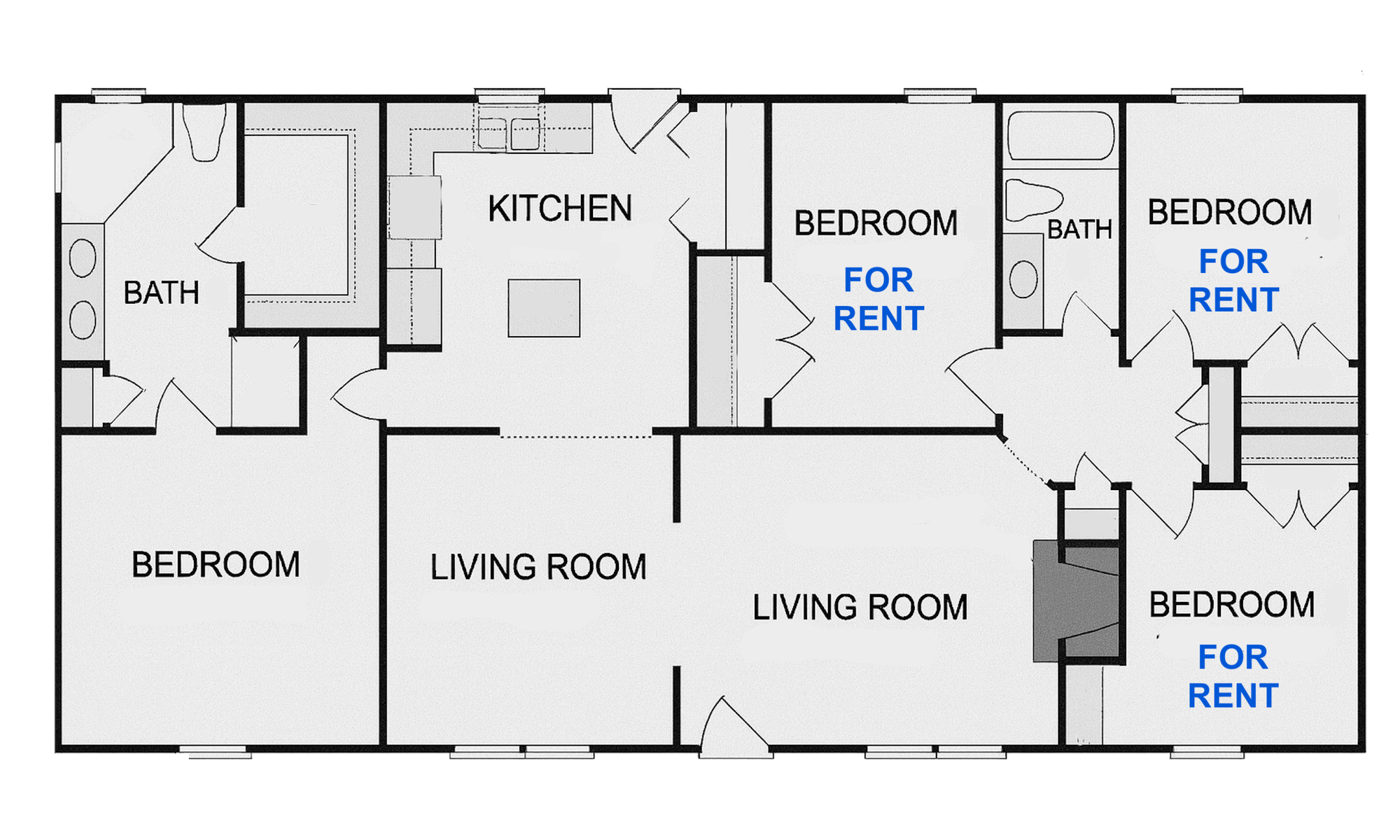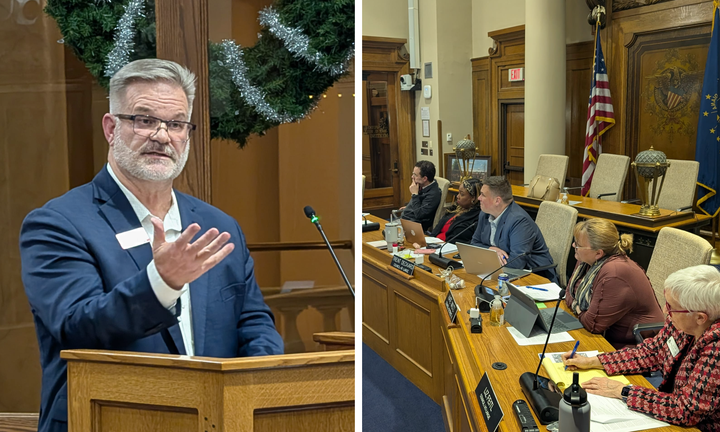Bloomington OKs up to three single-room rentals in owner-occupied houses
Bloomington’s city council voted 7–2 to allow up to three SRO bedrooms in owner-occupied homes in R1–R4 zones, with limits including conditional-use review, owner residency, and a two-year 150-foot buffer. Supporters cited affordability; dissenters warned of investor work-around..


Bloomington residents will now be able to rent out up to three bedrooms as “single room occupancy” (SRO) units in a house they own and occupy, with up to two adults per bedroom.
That’s the result of a 7–2 vote by the city council on Wednesday night, which approved an ordinance that changes the city’s Unified Development Ordinance (UDO).
The definition for a SRO includes the idea that people rent individual bedrooms and share common facilities like a kitchen, bathrooms, or a common area with other people.
One change was just to the label in the UDO use table, which swapped in “single resident occupancy” for “residential rooming house.” The old rooming house use was already allowed in several zoning districts other than R1–R4, which are commonly called single-family districts. What’s new is the ability to rent out up to SRO units in R1–R4—but it’s subject to several controls.
The controls are called “use-specific standards” in the UDO. One of those controls is that the owner has to live on site. It’s a measure that is meant to blunt the financial incentive that investors might have, to acquire single-family houses just to convert them into SRO rentals. The owner-occupancy requirement was met with some skepticism at the public mic and by some councilmembers, who pointed to work-arounds involving putting the ownership in the hands of an LLC.
The ordinance was supported by councilmembers with the basic argument that the city needs to increase affordable housing options. Dave Rollo and Andy Ruff dissented over concerns that the allowing SROs in R1–R4 could undermine the goal by turning owner-occupied homes into high-occupancy rentals.
An amendment to the ordinance proposed by Rollo would have reduced the number of adults per bedroom from two to one. Matt Flaherty objected to the reduction of occupancy from two to one with an observation about rental rates and the goal of making housing more affordable: “Allowing two people to occupy a room instead of one, all else equal, leads to lower rents, by which I’m defining as the rental amount per capita we are paying—right?” Rollo’s amendment failed 2–7, with additional support only from Ruff.
The ordinance was initiated by the city council with a resolution that was passed a year ago, in November 2024, and more recently re-affirmed. The resolution directed the plan commission to prepare an ordinance that would expand housing options by allowing SROs in additional zoning districts, clarify definitions, and address occupancy and ownership requirements. With one dissenting vote, Bloomington’s plan commission recommended at its September meeting that the city council approve the ordinance.
Another control that is meant to ensure some extra scrutiny for an SRO use is that the ordinance makes SROs only a conditional use, not simply an allowed use. Some discussion unfolded at Wednesday’s meeting about the implication of a conditional use: Does that entail a review by the board of zoning appeals (BZA) or can it be reviewed by the hearing officer?
Bloomington’s UDO gives the BZA authority to review conditional use permits. But the UDO also gives the hearing officer the authority to review a conditional use permit.
Under the plan commissioners rules of administrative procedure, the hearing officer can, at their discretion, transfer consideration of a conditional use permit to the BZA. At Wednesday’s meeting, it was development services manager Eric Greulich who presented the ordinance to councilmembers. Greulich said about the conditional use for SROs that it would at least mean “a public process that neighbors can be involved with so it does have a little bit higher level of transparency.”
The ordinance approved by the city council on Wednesday night includes another control on SROs, that is meant to prevent the proliferation of SRO uses in R1–R4 zoning districts. When an SRO use is approved for a given property, a 150-foot buffer area gets created around that property, which prevents any other SRO use getting approved within that buffer, for two years.
In dissenting on the vote, Rollo said, “I do see some potential for adverse outcomes. I like the idea of boarding houses. I like the idea of single room occupancy. I think what’s being ignored is the potential for certain very likely scenarios, particularly when profit incentives exist.”
Weighing in for the ordinance, Isabel Piedmont-Smith said, “I think that as far as housing and the housing crisis we are in, we need to do everything we can to provide more housing options. And I think this is one small key, one small part of the answer.”
Isak Asare indicated that the ordinance will continue to need attention and that he thinks more work is needed on the topic generally: “I’m not suggesting that we push this aside, but I do think that it’s something that we should continue to revisit, just so that we actually can move forward with trying to create and more possibilities and pathways to affordable housing.”
Asare added, “I’ll be voting yes tonight, but I do just feel like there’s a lot more that we need to continue to do in this space.”




Comments ()